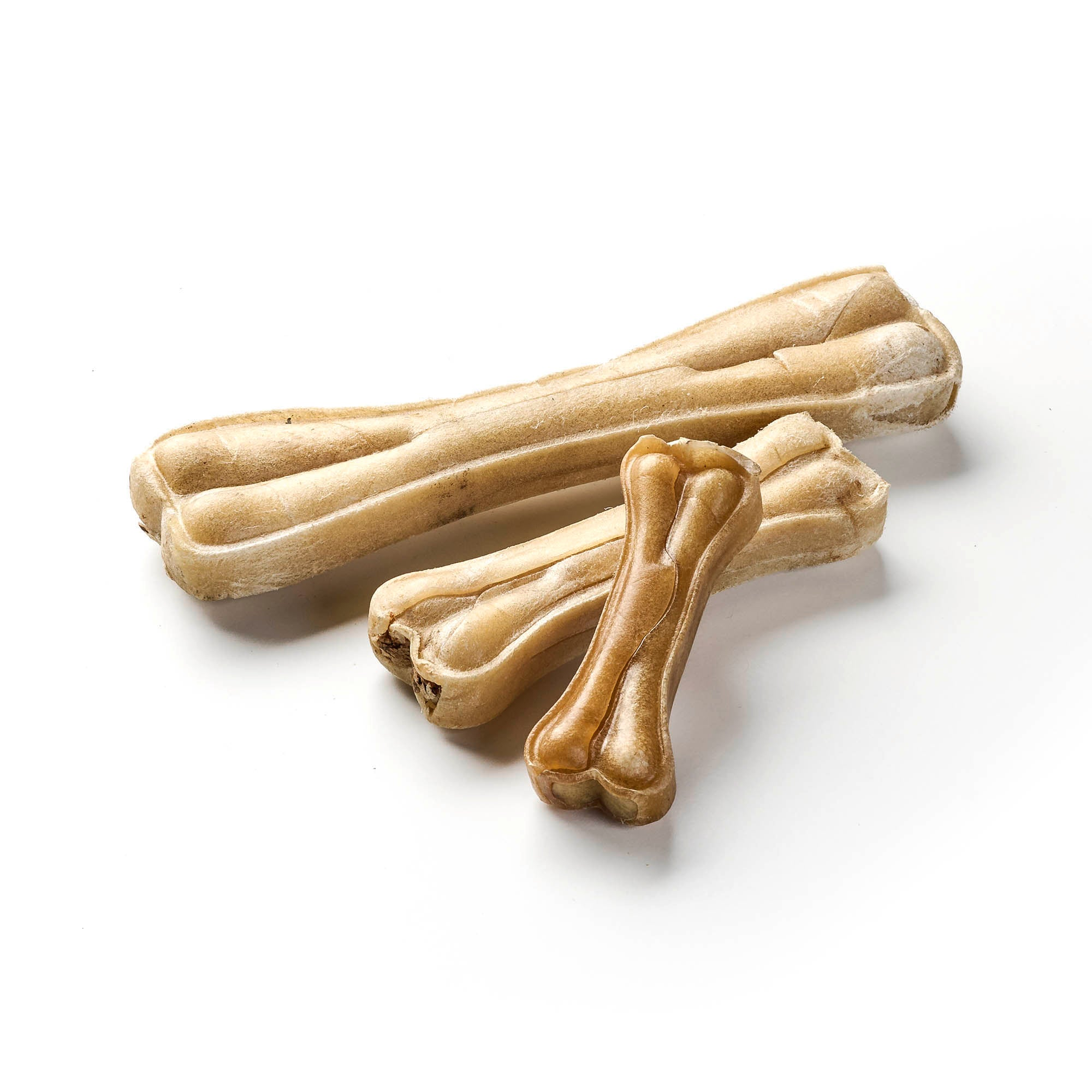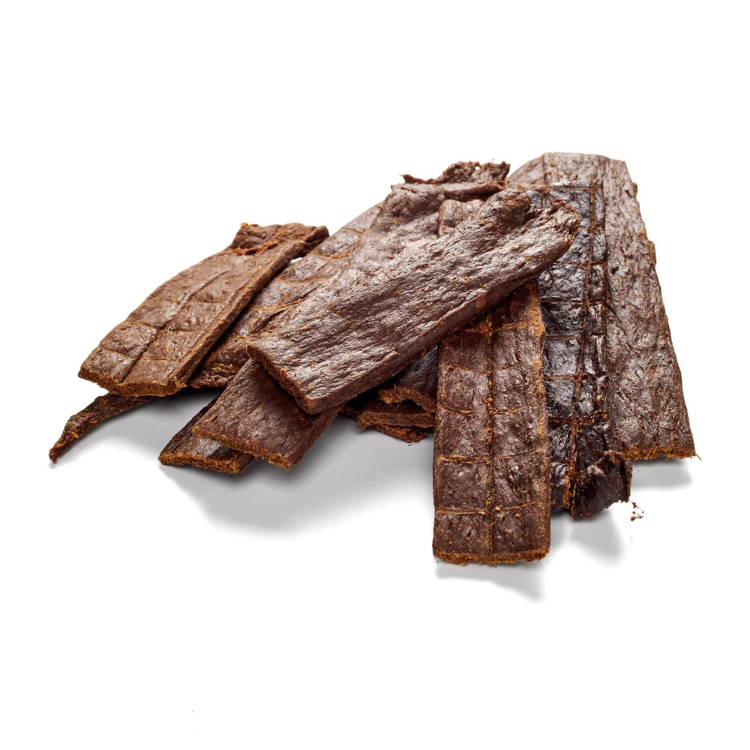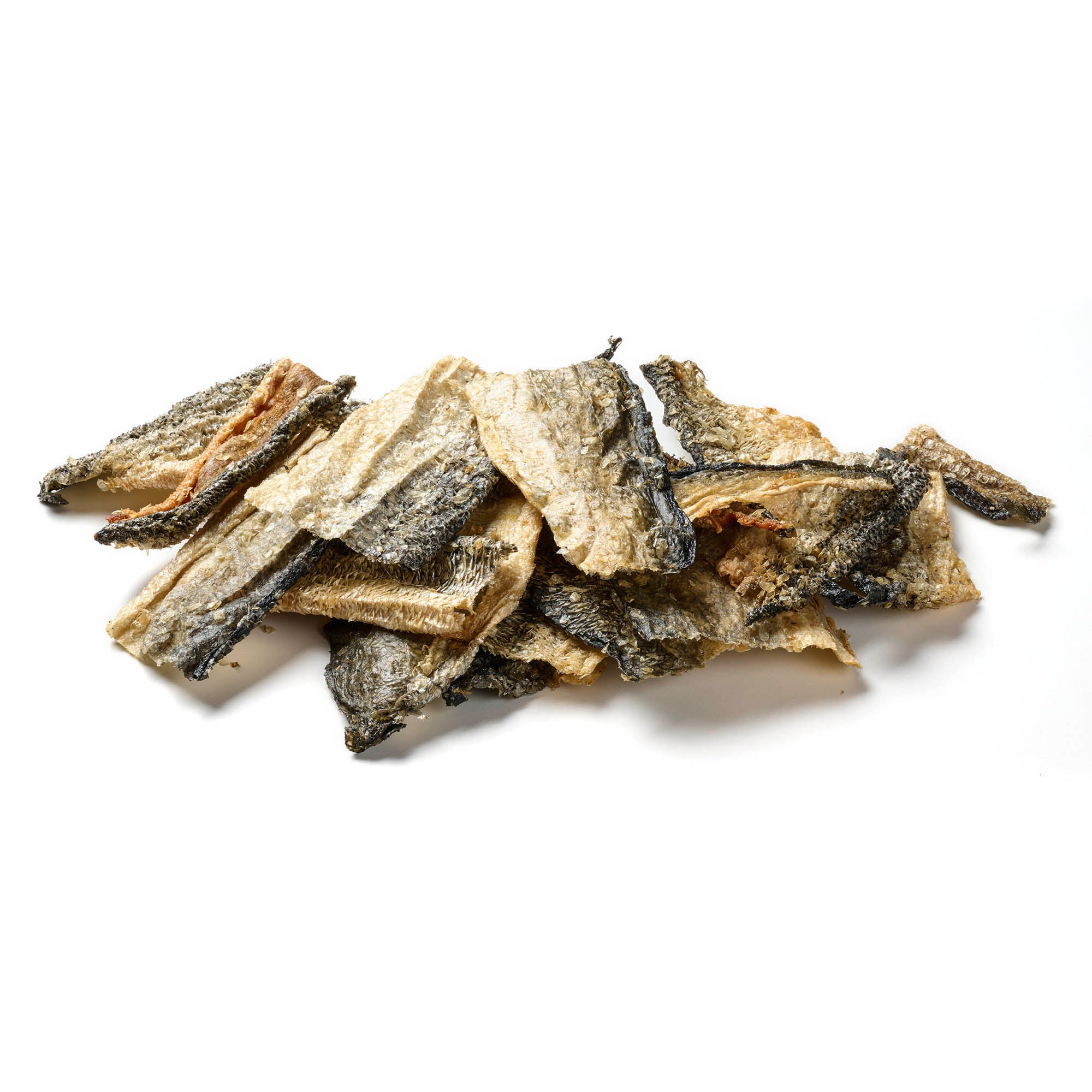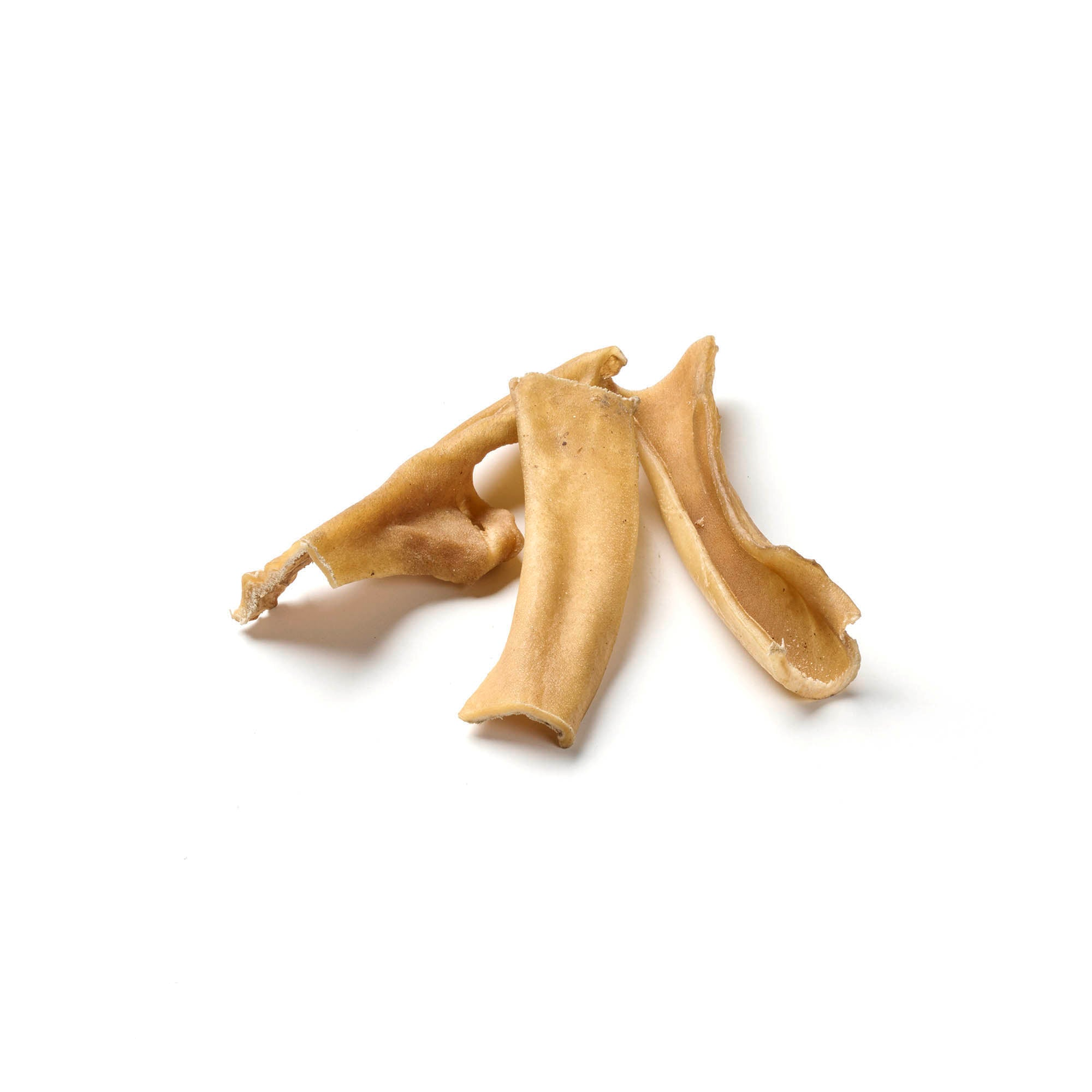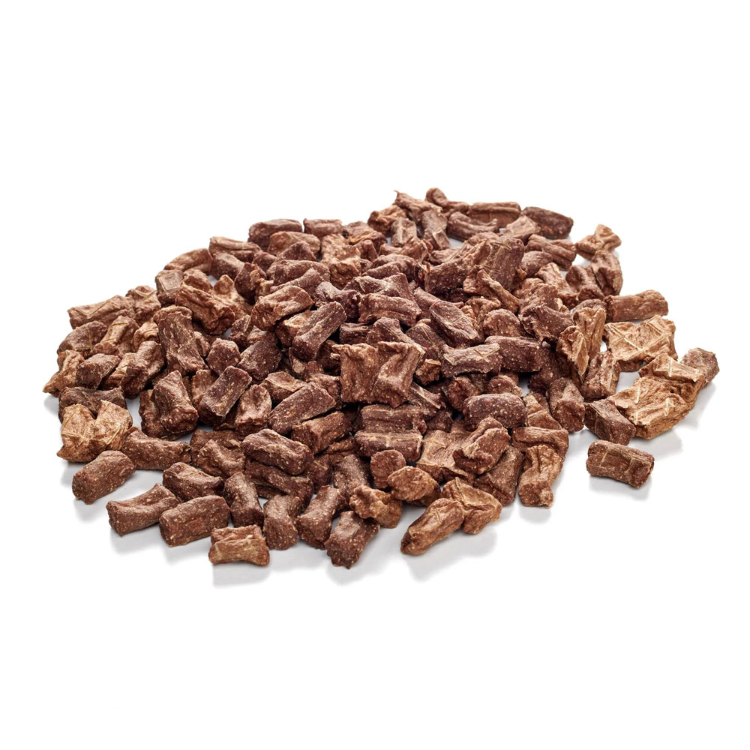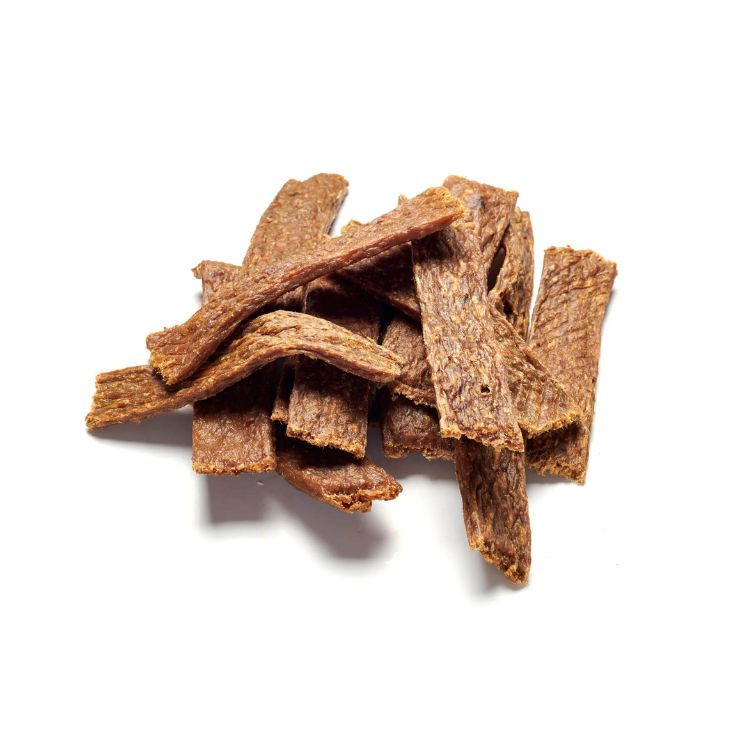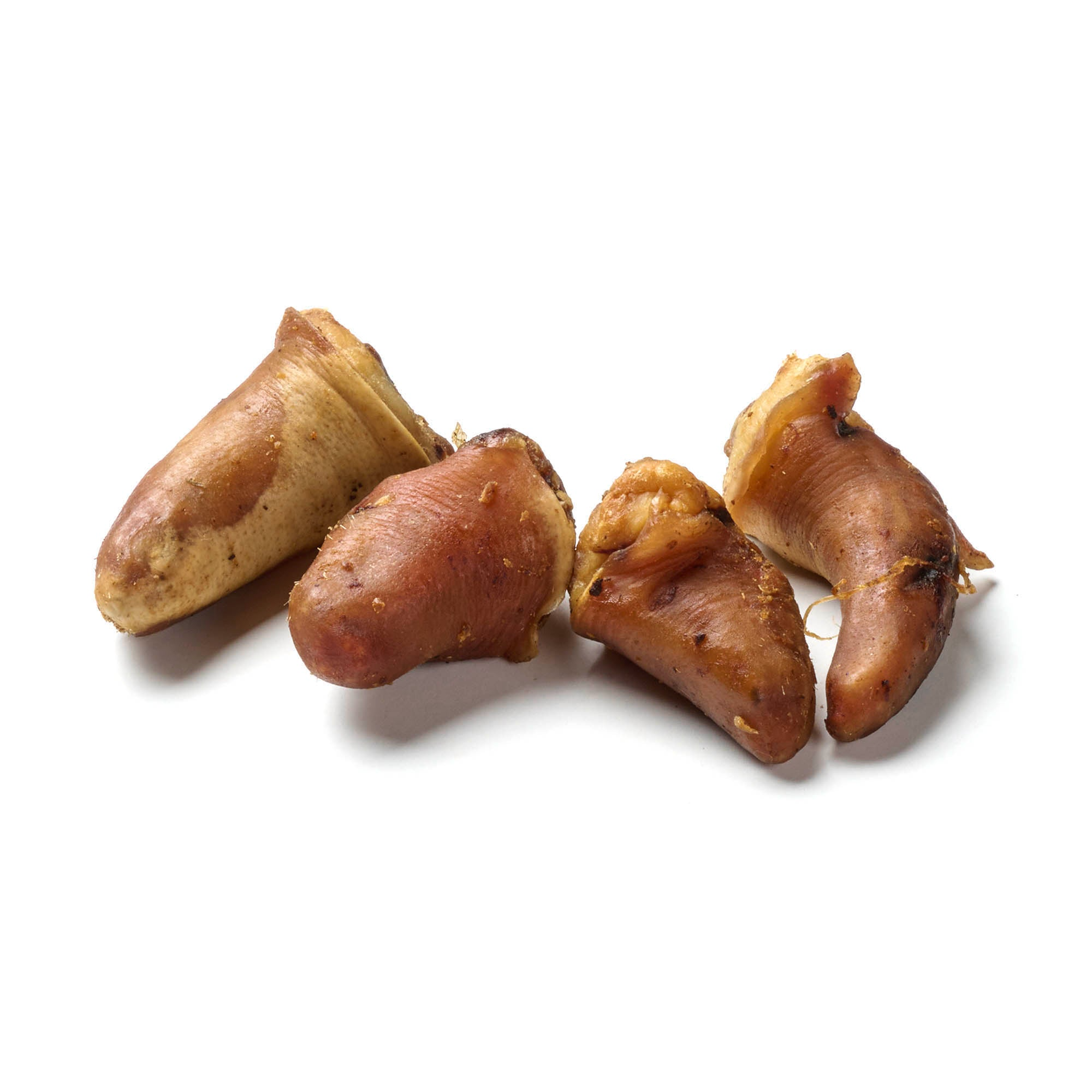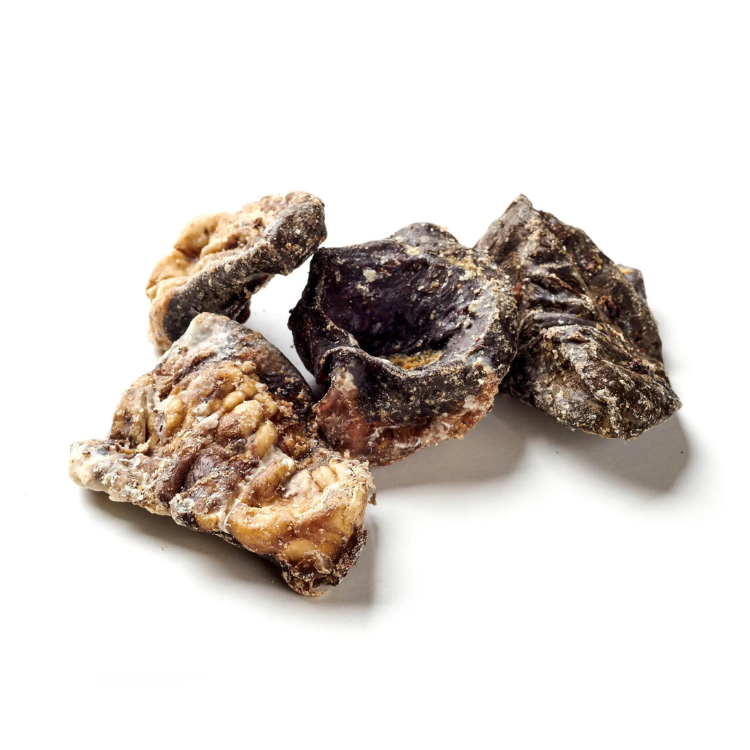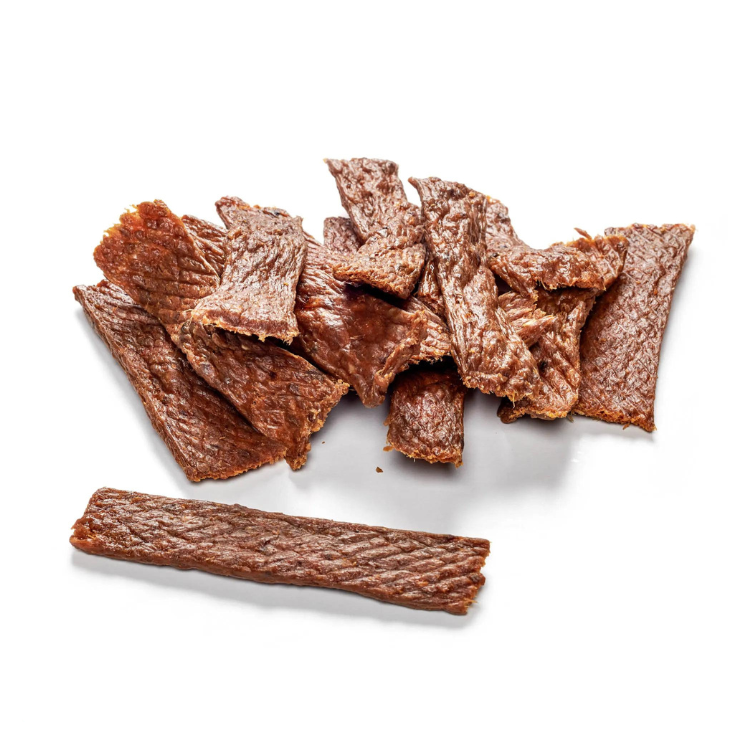
English bulldog
Share
The English Bulldog is one of the most popular dog breeds and is suitable for everyone. Don't be fooled by the seemingly grim expression: no matter whether it's for families, singles or seniors - the English Bulldog gets along with everyone. Thanks to their balanced character and not too strong urge to run, the "Bund Dogs" are also good for keeping in the city.
Content: English Bulldog
High quality dog snacks to pamper your dog, now available!
English Bulldog - Profile
- Character: playful, bright, loving
- Size: small
- Height: 32-40cm
- Weight: 20-25 kg
- Life expectancy: 8-10 years
- Coat type: shiny short coat
- Colors: red, fawn, brown, brindle or white spotting
- Special features: sensitive to high temperatures, hip problems
- FCI Group: Molossoid Pinschers and Schnauzers
English Bulldog - Special Features
The English Bulldog is a medium-sized and very muscular dog with large, erect ears, a short snout and a protruding lower jaw. Despite their rather grumpy look, the small dogs have a very playful and happy nature. The so-called "Bund Dogs" are particularly well-known for their adaptability and unpretentiousness. The dogs have a strong bond with their owners and adapt easily to their owner's rhythm of life. They don't like being alone and love to cuddle. The English Bulldog wants the attention it deserves.
A very likeable character trait of the English bulldog is that the dogs do not bark unnecessarily and are generally rather quiet animals. However, when dealing with strangers, the inner watchdog becomes apparent. The bulldog tries to protect its owners and the house, but is usually easy to restrain.
English Bulldogs are also extremely affectionate with children and family friends, which makes them a suitable family dog.
English Bulldog - What should be considered regarding nutrition?
There is not much more to consider when feeding an English bulldog than with other dog breeds. The most important thing is that the diet is balanced and that your companion enjoys eating the food. It is important to ensure that the food has a high meat content and does not contain any unnecessary additives or fattening agents.
A high-quality and natural dog food should therefore contain all the important nutrients according to the dog's age. Since English bulldogs are prone to obesity, it is important to monitor the weight and calorie intake of the dogs. Obesity can have serious consequences for the physical structure of the dogs. The food requirement is less than your dog would have you believe!
Treats should also be used in moderation. It is also advisable not to give your dog table scraps, as this has a negative impact on the training and health of your four-legged friend. You can find out which foods are right for your dog using online guides or relevant literature specifically for your English bulldog.
Reward your best friend with our dog treats!
English Bulldog - Health and Care
The care of an English bulldog is very straightforward. The wrinkles on the face and the entire body should be cared for regularly to prevent inflammation. Likewise, regular checking and care of the ears should not be neglected. A healthy and active English bulldog should under no circumstances weigh more than 25 kg.
It should be noted that bulldogs cannot regulate their body temperature well due to difficulty breathing and a "scrunched up" face. Therefore, the dog should be given a shady spot and plenty of water in summer temperatures. They are also sensitive to extreme cold, as the four-legged friends only have very thin fur and are therefore prone to catching colds.
English Bulldog - Origin & History
The English Bulldog was created in the 6th century by crossing Molossians of the Phoenicians with English mastiff-like dogs and is a very old breed of dog. The first mention of the dogs can be found in 1209, where it was described that the "bond dogs" separated two fighting bulls. The dogs' assertiveness in fighting bulls earned them their name. The ancestors of the modern English Bulldog were often used in bloody dog fights, which were banned by law in the 19th century. In the middle of the 19th century, breeders began to emphasize the amiable side of the fighting dogs and in this way bred a new type of bulldog that was characterized by its gentleness. The first breed standard was drawn up by the "Bulldog Club" in 1864. The powerful fighting dog quickly became a popular companion and family dog. However, the severe overbreeding was not without consequences. The short nose, the wrinkled face and the resulting breathing problems and other problems increased to such an extent that attempts are now being made to counteract this through health-oriented breeding. The FCI breed standard was adapted accordingly.
Conclusion
In summary, the English Bulldog is a popular dog breed with a playful, bright and loving personality. Despite their fierce appearance, they are extremely adaptable and well suited to families, single people and seniors, even in urban environments. Their health requires special attention, especially regarding respiratory problems and the care of their folds and ears. Proper nutrition, weight control and regular vet visits are important to maintain their quality of life. The history of the English Bulldog dates back to the 6th century, with them being bred from an original fighting dog to a loving companion and family dog. Nevertheless, health-focused breeding is necessary to address the problems associated with overbreeding and to preserve the breed.
Discover our selection of premium dog chews!

